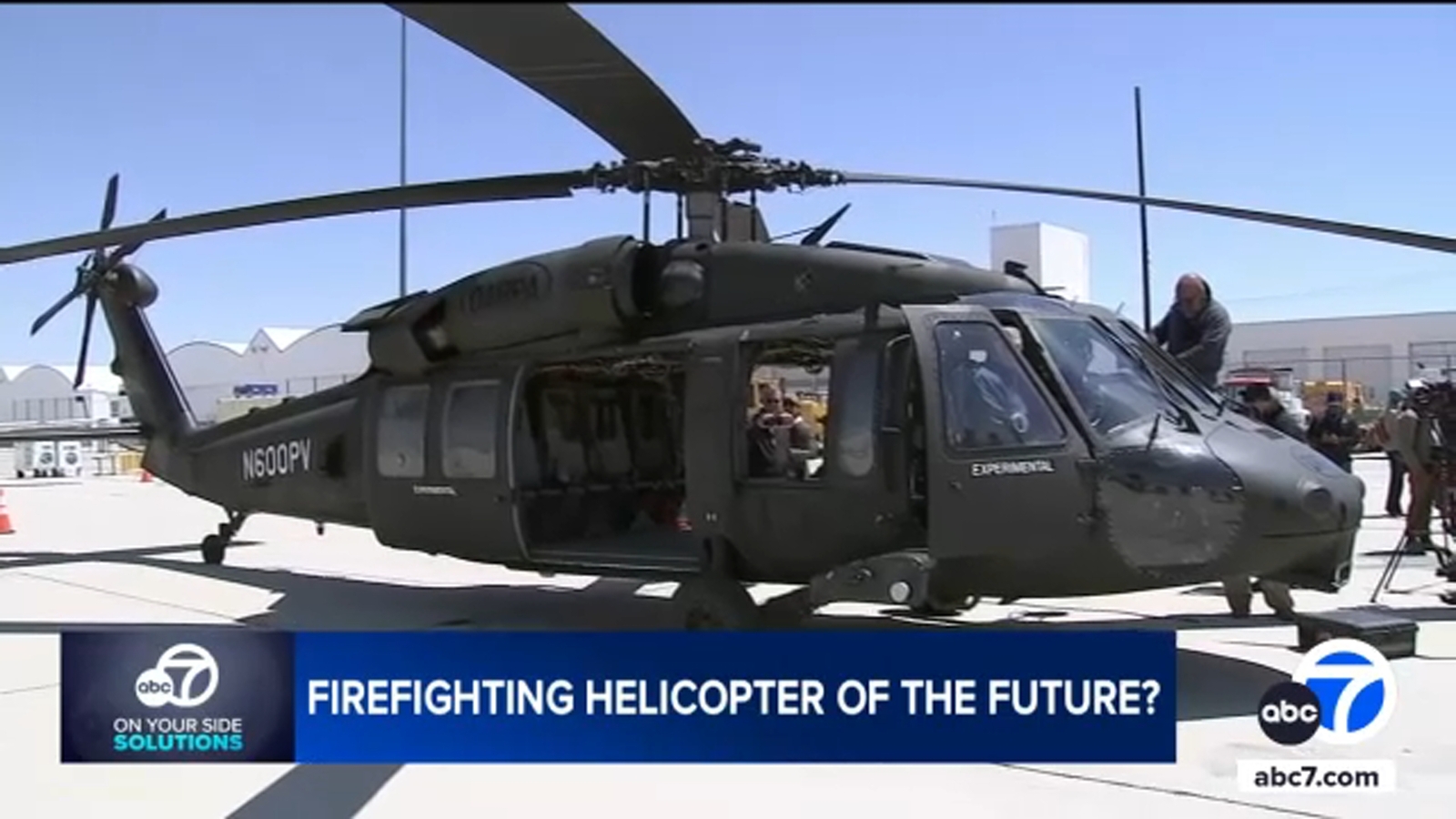Autonomous Firefighting Helicopters: Addressing The Challenges Of Wildfire Response

Welcome to your ultimate source for breaking news, trending updates, and in-depth stories from around the world. Whether it's politics, technology, entertainment, sports, or lifestyle, we bring you real-time updates that keep you informed and ahead of the curve.
Our team works tirelessly to ensure you never miss a moment. From the latest developments in global events to the most talked-about topics on social media, our news platform is designed to deliver accurate and timely information, all in one place.
Stay in the know and join thousands of readers who trust us for reliable, up-to-date content. Explore our expertly curated articles and dive deeper into the stories that matter to you. Visit Best Website now and be part of the conversation. Don't miss out on the headlines that shape our world!
Table of Contents
Autonomous Firefighting Helicopters: Addressing the Challenges of Wildfire Response
Wildfires are becoming increasingly frequent and intense, posing a significant threat to lives, property, and ecosystems globally. Traditional firefighting methods often struggle to keep pace with the rapid spread of these devastating blazes. Enter autonomous firefighting helicopters – a promising technological advancement that could revolutionize wildfire response and improve our ability to combat these dangerous infernos. But can these autonomous aerial vehicles truly address the challenges of wildfire suppression? Let's delve into the possibilities and the hurdles that remain.
<h3>The Promise of Autonomous Firefighting Helicopters</h3>
Autonomous helicopters offer several key advantages over traditional methods:
- Increased Speed and Efficiency: Unmanned aerial vehicles (UAVs) can be deployed rapidly and can operate continuously for extended periods, significantly reducing response times and increasing the volume of water or retardant dropped.
- Reduced Risk to Human Life: The inherent dangers associated with aerial firefighting, such as extreme heat, smoke inhalation, and potential crashes, are eliminated when humans aren't directly involved in the flight operation.
- Improved Precision and Targeting: Equipped with advanced sensors and AI-powered navigation systems, autonomous helicopters can precisely target hotspots and deliver water or suppressants with greater accuracy, maximizing their effectiveness.
- Enhanced Surveillance and Mapping: UAVs can provide real-time data and aerial imagery of the fire's progression, aiding in strategic decision-making and resource allocation. This improves situational awareness dramatically.
- Cost-Effectiveness (Potential): While initial investment costs are high, the long-term potential for cost savings through reduced personnel risks and increased efficiency is significant.
<h3>Addressing the Challenges: Technological and Regulatory Hurdles</h3>
Despite the significant potential, several challenges must be overcome before autonomous firefighting helicopters become widely adopted:
- Technological Limitations: Developing reliable systems capable of operating autonomously in challenging wildfire environments (e.g., extreme heat, smoke, strong winds) remains a significant technological hurdle. Robust AI algorithms capable of navigating unpredictable terrain and making real-time decisions are crucial. Battery life and payload capacity also need further improvement.
- Regulatory Frameworks: The integration of autonomous helicopters into existing airspace and emergency response systems requires the development of comprehensive safety regulations and operational protocols. Clear legal frameworks are necessary to address liability and accountability in case of accidents.
- Data Security and Privacy: Autonomous helicopters collect vast amounts of data, raising concerns about data security and the potential for privacy violations. Robust cybersecurity measures are essential to protect sensitive information.
- Public Acceptance: Gaining public trust and acceptance of autonomous technology in emergency situations is vital for successful deployment. Addressing public concerns regarding safety and potential job displacement is crucial.
- Infrastructure Requirements: Effective operation requires supporting infrastructure, including charging stations, communication networks, and maintenance facilities.
<h3>The Future of Autonomous Firefighting</h3>
The development of autonomous firefighting helicopters is an ongoing process, with significant progress being made in various research and development initiatives globally. Collaboration between technology companies, government agencies, and firefighting organizations is crucial to overcome the existing challenges and unlock the full potential of this transformative technology. While widespread adoption is still some years away, the future of wildfire response may well depend on the successful integration of these advanced aerial systems. Further research focusing on improved AI, enhanced sensor technology, and robust safety protocols is essential to making this technology a reality. Staying informed about advancements in this field is crucial for understanding how we might tackle the growing threat of wildfires more effectively.
Call to Action: Learn more about the latest advancements in autonomous firefighting technology by following relevant research institutions and industry news. Supporting research and development efforts in this crucial area will be instrumental in mitigating the devastating effects of wildfires in the years to come.

Thank you for visiting our website, your trusted source for the latest updates and in-depth coverage on Autonomous Firefighting Helicopters: Addressing The Challenges Of Wildfire Response. We're committed to keeping you informed with timely and accurate information to meet your curiosity and needs.
If you have any questions, suggestions, or feedback, we'd love to hear from you. Your insights are valuable to us and help us improve to serve you better. Feel free to reach out through our contact page.
Don't forget to bookmark our website and check back regularly for the latest headlines and trending topics. See you next time, and thank you for being part of our growing community!
Featured Posts
-
 Evaluating The Top Backup Quarterbacks Who Could Make A 2024 Playoff Push
May 08, 2025
Evaluating The Top Backup Quarterbacks Who Could Make A 2024 Playoff Push
May 08, 2025 -
 Fatal Alligator Attack Florida Canoeist Dies In Lake
May 08, 2025
Fatal Alligator Attack Florida Canoeist Dies In Lake
May 08, 2025 -
 Mariners Claim Former Champion Of Julio Rodriguez Off Waivers
May 08, 2025
Mariners Claim Former Champion Of Julio Rodriguez Off Waivers
May 08, 2025 -
 Florida Alligator Incident Woman Dies After Canoe Overturns
May 08, 2025
Florida Alligator Incident Woman Dies After Canoe Overturns
May 08, 2025 -
 Hernandez To Il Dodgers Outfielder Out 10 Days With Adductor Injury
May 08, 2025
Hernandez To Il Dodgers Outfielder Out 10 Days With Adductor Injury
May 08, 2025
